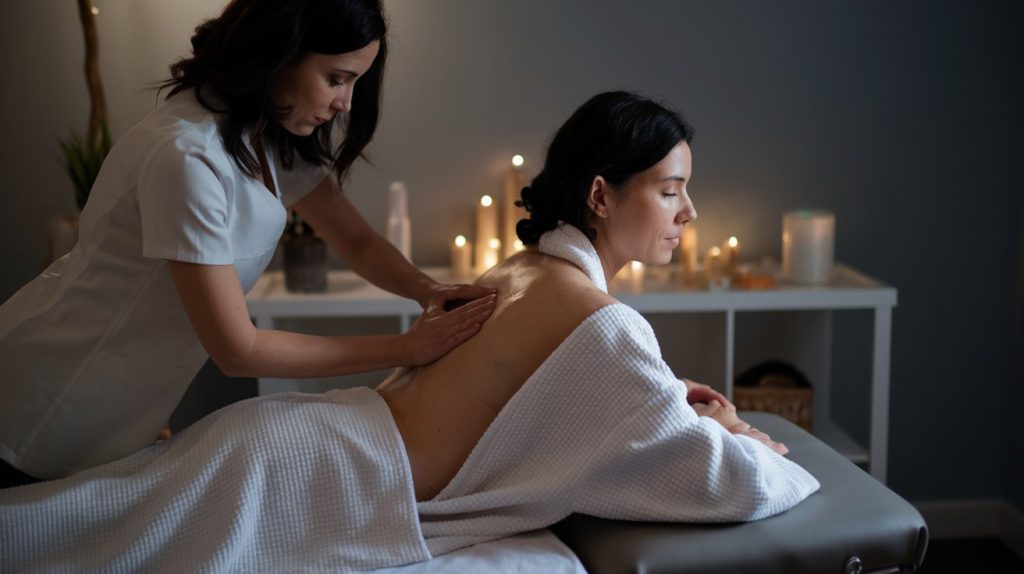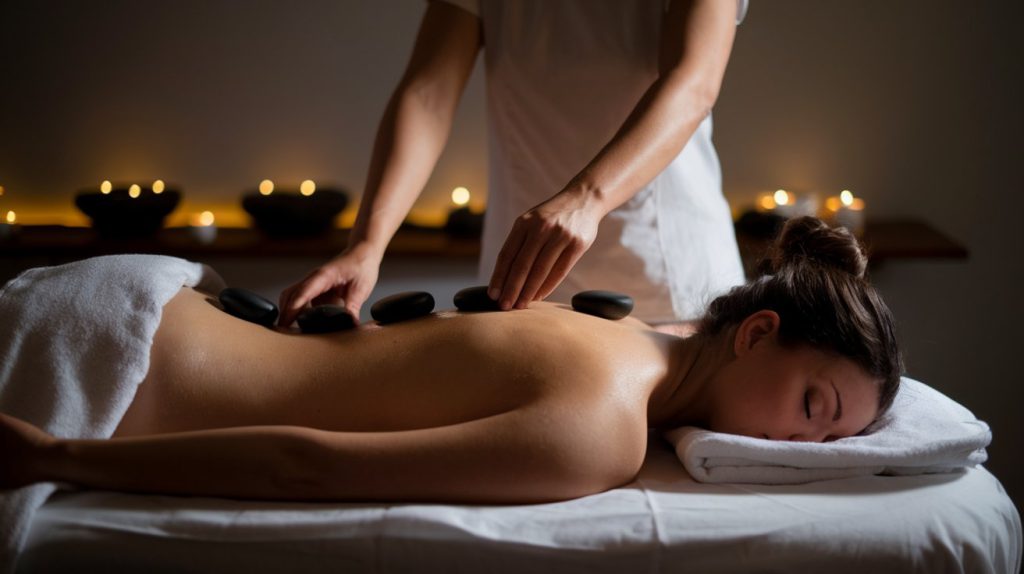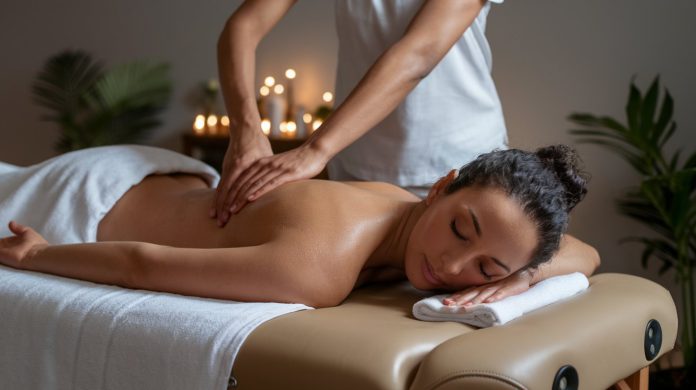In this era of continual work schedules, excessive anxiety, and demands on our time, finding ways to bring back balance to mind and body has never been a lot more crucial. In a world more and more devoted to self-care and wellness, one timeless practice is a key to relaxation and healing: massage. It has ancient origins in societies that realized the healing properties of touch. Massage today remains an accessible and respected therapy for mental and physical health.
Massage is much more than a luxury or a dandy – it’s a therapeutic process that could significantly enhance physical health, psychological stability, and quality of life. Science backs up massage as a therapeutic advantage, offering relief from pain, anxiety, stress, and even psychological stress. Combined with some other health methods, massage can promote a whole body, mind-and spirit well-being. This particular report reviews the history, techniques, science, and advantages of massage and its potential to balance mind and body.
The Science Behind Massage: How Touch Heals
Massage is the manipulation of the joints, skin, and skin with pressure or hands. This particular practice stimulates the nervous system and sets off biological reactions that help the body and brain. As soon as you receive a massage, the actual physical contact activates the release of endorphins – all-natural mood-enhancing chemical substances that serve as the body’s natural painkillers. These neurochemicals lower pain and stiffness and promote positive mood changes and relaxation.
One strategy where massage attains this therapeutic effect would be through activating the parasympathetic nervous system (“rest & digest”). While the body relaxes from massage, pulse rate, blood pressure, and respiratory rate drop. This shift offers a sharp contrast to the body’s stress response, which may result in being exhausted, overwhelmed, or tense.
Massage additionally reduces the production of cortisol, a stress hormone that could kill both mental and physical well-being. Constant stress, heart disease risk, diminished immune function, and stomach issues are linked to high cortisol levels. Regular massage lowers these levels, brings calm and restores balance to the body.
The Mind-Body Connection: How Massage Helps With Stress
Stress is a ubiquitous challenge in contemporary life. No matter whether it is for work, personal relationships, or simply daily living, chronic stress can be bad for the body & mind. Tension of muscles raises headaches, back pain, and exhaustion, and the brain gets nervous with nervous feelings, restlessness, or irritability. This mind-body connection is at the foundation of massage therapy relief.
Massage releases muscle tension and calms the central nervous system, easing the psychological signs of stress. For instance, pressure and gentle manipulation of the muscles release tightness and knots which might have developed from years of tension. Totally, the calming touch encourages mental relaxation and decreases the anxiety related to physical discomfort.
Massage could also activate the relaxation reflex of the body to reset and counter stress. Eventually, frequent massage sessions help the body manage stress so you can remain calm despite the difficulties of living.
Pain Relief & Healing: Role of Massage In Chronic Pain Management
For most people, massage is a form of therapy and an indulgence to manage pain – especially acute pain. Problems like arthritis, fibromyalgia, and sciatica frequently have accompanied discomfort which hinders quality of life. Whether the pain is persistent or acute, massage has been found to be good at managing discomfort.
When applied strategically, massage enhances blood circulation and circulation to affected areas, supplying nutrients and oxygen to the muscles and cells. When circulation increases, inflammation decreases and the body’s natural healing processes are induced. The kneading, stretching, and pressure of some other massage methods also break up adhesions or “muscle knots” that create the pain.
A significant advantage of massage would be lower back pain. Research indicates that frequent massage treatment for lower back pain leads to enhanced mobility and pain relief. If you have problems like herniated discs or muscle strains, massage might be a noninvasive substitute for surgery or prescription drugs.
Emotional & Psychological Health Through Massage
Massage can provide a physical, emotional, and psychological healing avenue. As emotional stress usually manifests physically in the body, massage allows psychological burdens to be released by touch. Regular massage decreases symptoms of stress and depression and also creates mental stability and well-being.
The act of receiving a massage is comforting and nurturing and allows the release of built-up psychological pain. Regardless of whether you’re going through the scars, grief, or emotional fatigue from a previous trauma, massage could offer a therapeutic release of emotion. For other people, the touch of a massage might induce tears, chuckles, or a sensation of lightness as the entire body lets out the psychological weight it’s taken.
Additionally, massage therapy might improve oxytocin, a hormone essential for bonding, trust, and mental connection. Oxytocin is sometimes called the “cuddle hormone” and its release can induce a feeling of relaxation and security, reduce anxiety, and boost security. For all those who experience psychological imbalances or require more relaxation, massage is often a tool for emotional healing.
Various Varieties of Massage Techniques And Their Benefits
No massage is standard and the practice provides an assortment of methods to meet individual requirements. Each type of massage has its very own advantages including stress relief, emotional healing, or physical rehabilitation. A few of the most popular massage methods are talked about below:

- Swedish massage
Swedish massage is among the most popular methods worldwide and is frequently utilized to induce relaxation and stress reduction. It involves long, even strokes, kneading, and circular motions that circulate and relax muscles. The pressure in Swedish massage is usually light to moderate and is therefore more suited for relaxation instead of deep tissue work. - Deep tissue massage
Unlike Swedish massage, deep tissue works with deeper layers of connective tissue and muscle. It’s helpful for lessening chronic pain, muscle stiffness, and stress which have developed as time passes. The pressure in deep tissue massage is tighter and a lot more intense which could be beneficial for muscle mass adhesions or sports injuries. However, you must communicate with the therapist during a deep tissue session to stay away from discomfort. - Sports massage
Created for athletes or people who lead active lifestyles, sports massage incorporates Swedish and deep tissue techniques. Sports massage is intended to stop injuries, enhance performance, and also aid recovery. Stretching and manipulation of muscles enhance flexibility and range of motion while particular methods tackle muscle fatigue, pain, and stress. - Shiatsu massage
Originating in Japan, Shiatsu is a pressure-based massage carried out using hands, palms, thumbs, and occasionally elbows to apply rhythmic pressure to selected points on the body. Based on the principles of traditional Chinese medicine, Shiatsu balances the Qi (energy) and encourages wellness. This method aids in stress reduction, boosting relaxation and energy. - Aromatherapy massage
Essential oils are utilized In aromatherapy massage along with touch therapy to aid healing. Essential oils of lavender, peppermint, or eucalyptus offer extra medicinal advantages because of their chemical qualities. As an example, lavender will help with rest and eucalyptus helps with breathing issues. Massage can treat headaches to skin issues. - Hot stone massage
Smooth heated stones are laid on the body to warm and loosen up the muscles In a hot stone massage. The warmth of the stones increases blood flow and the stones’ pressure creates a deeply relaxing effect. This method is especially good for muscle stiffness, stress-related tension, or poor circulation.

The Advantages of Regular Massage
Massage is much more than a luxury – it is a commitment to your well-being & wellness. When included in a wellness routine, massage offers numerous benefits beyond just relaxing. Long-term benefits of consistent massage include:
- Improved Circulation: Stimulating blood circulation, massage delivers nutrients and oxygen to muscles, cells, and organs for overall wellness.
- More Flexibility: Regular massage eases muscle stiffness and also enhances joint mobility for greater flexibility and motion.
- Stress Reduction: Regular massage therapy decreases cortisol and induces the release of relaxation hormones like oxytocin.
- Better Sleep Quality: Some people sleep more quickly after a massage because deeper relaxation might help with insomnia symptoms.
- Enhanced Detoxification (ED): Massage activates the lymphatic system, which removes waste materials and toxins and also supports the immune system.
- Body posture Improved: By releasing muscle tension and creating alignment, massage might improve posture and decrease musculoskeletal threat.
The Role of Professional Massage
Self-massage tools and methods are useful, but professional massage 대전출장안마 therapy provides distinct advantages. Trained massage therapists know physiology, muscle mass function, and the methods to target areas of tension. They may also adjust pressure and method to match your needs to make the session therapeutic and comfy.
Professional therapists could also help find out underlying problems that are not apparent to the person. As an example, you might not be aware of postural imbalances or even concealed muscle tightness which could benefit from targeted treatment. A skilled therapist will find these problems and fix them as time passes.
Selecting the Right Massage Therapist
A massage journey 부산출장안마 without a massage therapist is not complete without finding the right one. Look for a licensed and certified therapist with experience in the massage type you want. Regardless of whether you need relief from acute pain, general relaxation, or stress reduction, a therapist will customize a treatment for you.
Also, share with your therapist any health conditions or concerns. This will enable them to adjust their approach and offer you the very best possible care. Most importantly make the experience comfortable and you feel safe and relaxed during the session.
Conclusion: Embrace the Healing Power of Touch
The healing advantages of massage are undeniable – providing both physical help and also emotional and mental healing. In a world where productivity overtakes personal wellness and balance, massage reminds us to slow down and enjoy ourselves. Regardless of whether you require assistance with psychological imbalances, persistent pain, or stress, massage will be your path to balancing your body and brain. Include massage in your wellness routine for relaxation, healing, and vitality.




